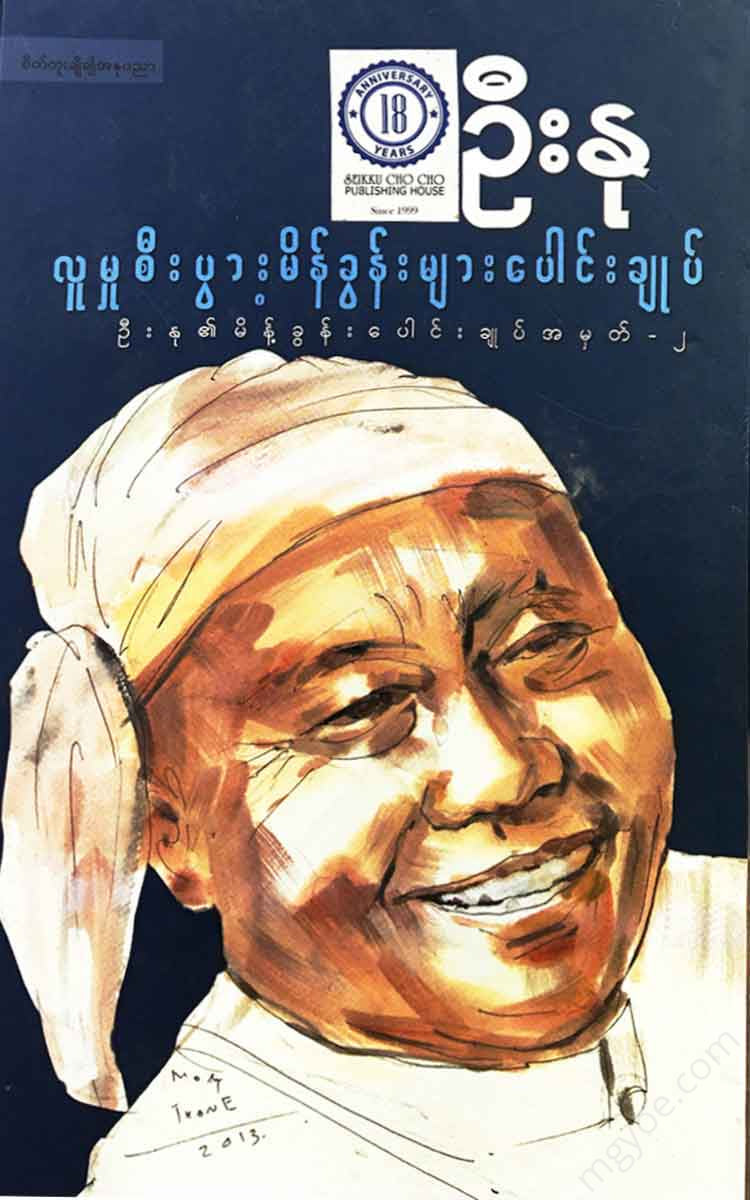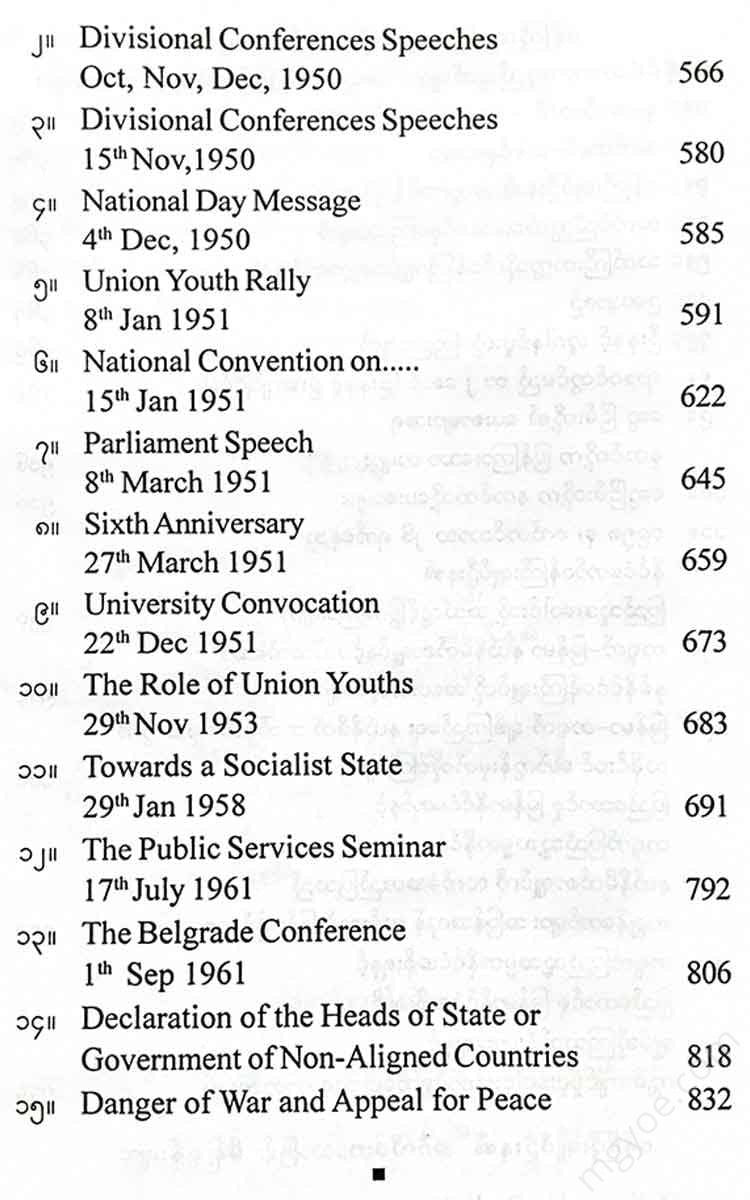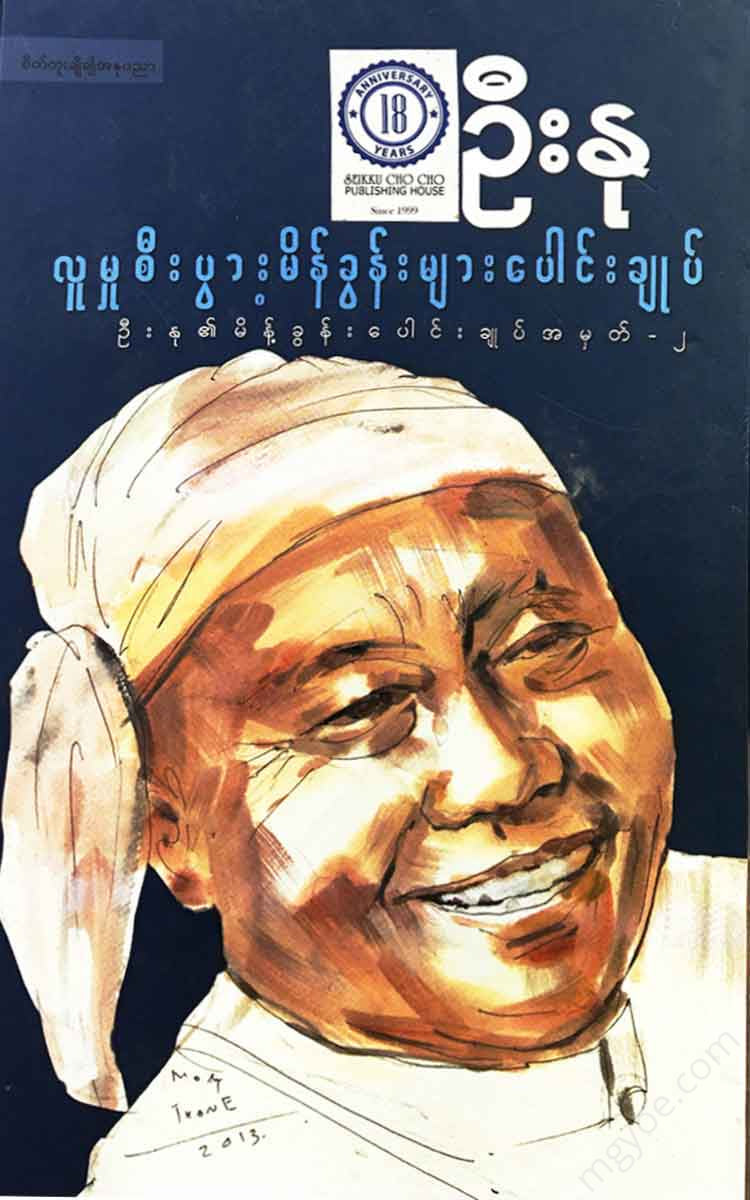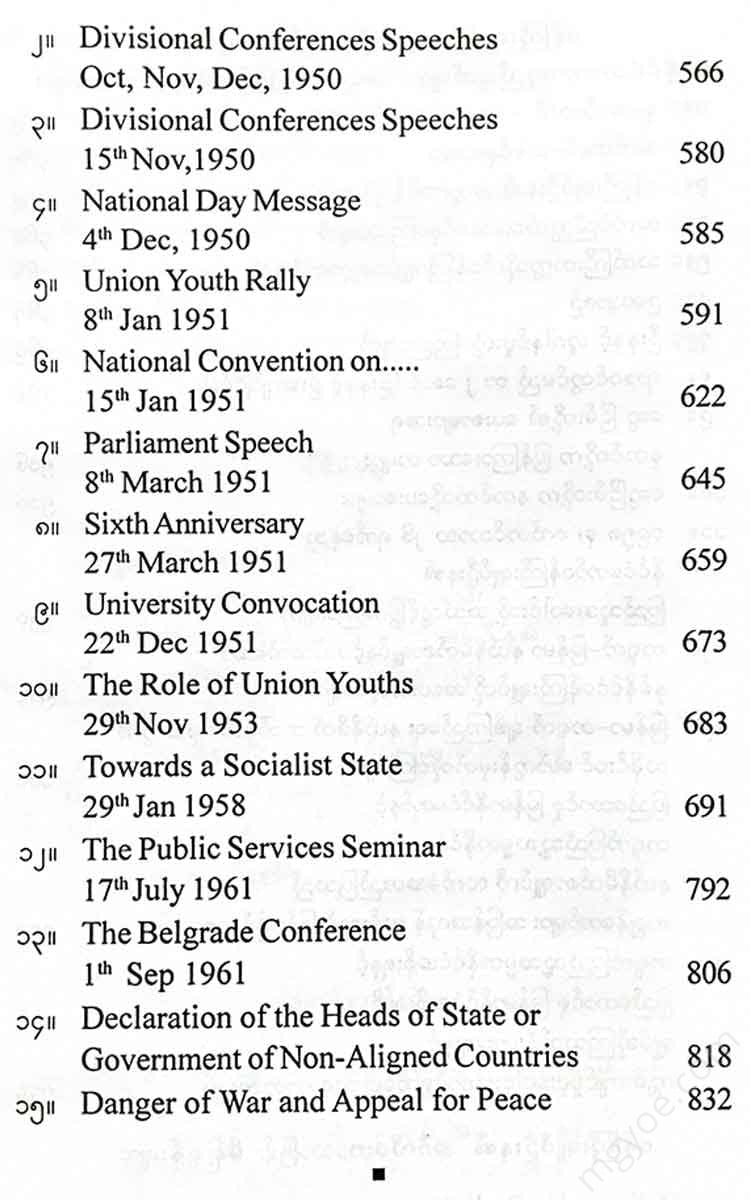စိတ်ကူးချိုချိုစာပေ
U Nu - Social and Economic Summary
U Nu - Social and Economic Summary
Couldn't load pickup availability
Prime Minister Thakin Nu
Of
Cooperative speech
(September 10, 1950)
Before I talk about cooperatives to the peace leaders and cooperative leaders who have come here, I have one thing to apologize for. Since last August, I have ordered that a plan for cooperative mobilization and organization be drawn up and that cooperative movement, organization, and development be carried out within the boundaries of Yangon, and I have taken the responsibility of personally participating in it. In accordance with that order, as a first step, a pioneer group of speakers was formed and we planned to speak in each of the 14 peace wards in Yangon every night from August 14 to 27. Originally, I had planned to lead the speech myself, but I had other important matters to attend, so I had to travel at that time. Therefore, I was unable to attend any of the speeches. Although I was unable to attend, it is my responsibility to speak about cooperatives. That is why this meeting is being held. I would like to apologize to the peace and cooperative leaders who have come here for having to go through such a hard time and attend another meeting.
2. Today I would like to talk about cooperatives in seven parts. The parts are...
(1) History of World Cooperatives,
(2) History of Burma Cooperatives,
(3) Historical lessons and cooperative principles;
(4) The Burmese economic and cultural situation and cooperativism,
(5) Current project,
(6) How to implement the project;
(7) The responsibilities of the public and leaders;
(1) History of World Cooperatives
3. Since the beginning of human existence on earth, people have helped each other in the tasks of eating, wearing, and living. In Burma, the community helps each other in the field of agriculture and medicine. I don’t know when it started. It has become a tradition. Not to mention living in general. Even if you have to do something, you have to help each other. In countries where agriculture is done with dams and embankments, such as Mesopotamia and Holland, there has been a systematic way to maintain canals and bridges. In Burma, there was a system in which the entire village helped each other during the planting and harvesting of rice. Although these things were done in a cooperative manner, it cannot be said that the modern cooperative system began at that time. Because the mutual assistance that emerged at that time was to overcome the difficulties caused by man. However, as people developed civilization, they encountered difficulties due to man-made systems. As economic systems developed, people with capital began to compete with each other. In this competitive capitalist system, the mutual assistance customs that emerged in the past disappeared. When this disappeared, the competitive capitalists gradually eliminated each other and became monopoly capitalists. At that time, people lost the old mutual assistance customs and traditions, and suffered more. So, from the days of competitive capitalism, the modern cooperative system emerged. Gradually, in the era of monopoly capitalism, this cooperative system became stronger. So, to give you a clear picture of the history of global cooperatives, I would like to choose some important countries and explain how these countries emerged. What kind of cooperatives emerged?
4. First, I will show you England. You must have heard of Robert Owen. In England, when the industrial system began to develop in the 1800s, the workers were very poor because of the greed of the wealthy employers. At that time, Owen tried to establish a factory and a workshop owned by the workers. But it failed. His ideology was very popular among the workers. In a small town called Rochdale, where there were many factories and textile mills, the weavers were unemployed. The wages paid to the workers in the factories were also very low. The workers lived in cramped quarters like fish tanks. There was not enough water, not enough firewood, and the wages they received were only from coupons that they bought from the shops owned by the workers. So you can imagine how poor the workers were. Twenty-eight woollen workers in the town, inspired by Owen's ideology, banded together to raise their standard of living. Their aim was...
(a) Collective purchasing and distribution of food and clothing,
(b) Building houses for members,
(c) Opening workshops for members,
(d) Purchase of land plots for members;
(e) To create a self-sufficient community for all, one day.
These are not small goals. The ultimate goal is to establish a country. There are such big goals, but in the end, only collective purchasing and distribution work remains. In short, this is where the consumer cooperative system began.
5. How was the Rockdale system different from the capitalist industry and other industries that existed at that time?
(a) Anyone can join the club, regardless of gender, and only people with bad morals are allowed.
(b) There is a limit to the maximum amount of capital that members can invest in.
(c) A member may only cast one vote.
(d) Only the lowest interest rate is paid on the principal.
(e) Profits are not distributed according to capital but according to the value of purchases. These are the points that distinguish them from other capitalist businesses. These are also the main points that all cooperatives that emerged later adopted.
6. This association was established on 21 December 1844. From that time on, the consumer co-operative movement in England began to grow. From the small consumer co-operative societies, the wholesale co-operatives emerged. Then the Co-operative Union was formed and started to work on education, guidance and guidance. At first, the co-operatives in England were not at all involved in politics. I heard. But when the First World War came, when the surplus tax was levied, the Co-operative Party was formed and they were elected to Parliament. In England, consumer co-operatives were more important than other types of co-operatives, so I will not talk about other types of co-operatives, but will talk about the history of co-operatives in other countries.
7. Fourier, who lived in France from 1772 to 1837 , thought of a system called the Phalastère . He wrote down exactly what people in that system should do. How they should eat. How they should live. But he could not test it. Another socialist named Saint Simon took up Fourier's ideas. Saint Simon's disciple, Buches , conceived the cooperative production system. His ideas reached the hands of a politician named Louis Blanc. When Luc Blanc joined the government in 1848, the government itself encouraged cooperatives. It provided capital. But they did not grow too fast and did not reach the level of encouragement. Gradually, cooperatives grew stronger. These associations were sometimes organized by employers. But more often, the workers themselves were organized during periods of unemployment. For example, a businessman named Godin , who worked with his workers, turned his business into a cooperative, and when he died, his workers continued to own it. But this is rare. There are many associations formed by the workers themselves. Let me give you an example. Once, four people who made very small machines, such as cameras and watches, were unemployed. They got together and formed a cooperative. They were given a job to make a camera. They had no money to buy the materials to make the camera, so they sold the secretary's dining table, chairs, and wardrobes. From that day on, they owned a four-story workshop in Paris. They had more than 600 workers. One of the unique things about this association was that all members received equal wages. They were also responsible for the education of their members.
8. Cooperative manufacturing industries do not have large workshops or factories. They only have small businesses such as tailoring, furniture moving, and bread baking. Also, in France, the government encourages cooperatives, so the government provides capital and buys most of the goods.
9. The history of German cooperatives is very important for us. When we started to establish cooperatives in our country, we adopted the system from Germany. The most important cooperatives in Germany are agricultural cooperatives. For more than 1,800 years, German farmers, like our farmers, bought from us, for example, seeds, tools, and agricultural equipment. The brokers knew that the farmers would not be able to buy these products, so they sold them at extremely high prices. They charged high interest rates. But the farmers did not care how high they were. They only cared about getting the products. When the crops came out, the people who sold them were these brokers. These brokers also sold the products at the highest price when they sold them, and when they bought the crops from the farmers, they bought them at the lowest price. In this situation, when will the farmers get rich? At that time, a man named Raiffeisan did charitable work to make farmers happy. But farmers could not be happy forever. They always went bankrupt. So this man believed that farmers would only be happy if they worked for their own benefit. In order to do this, he first had to get rid of their debts. He had to get new loans that were easy to get rid of the debts of the stressed traders and brokers. Even if he got new loans, no farmer had to provide collateral. So the farmers had to get together and guarantee each other. With this in mind, he established a cooperative bank. The rules were...
(1) Anyone with good moral character living in the village can join.
(2) No shares are allowed, but unlimited liability is assumed for debt repayment.
(3) A member can only cast one vote.
(4) A committee will be formed to handle club matters.
(5) Profits are not distributed but kept as a fund.
These banks first borrowed money from people like Rephasan. They lent this money back to the members. Under this system, the farmers were very comfortable. The banks also increased their money. In addition to banking, they also bought and distributed goods. Then these banks joined together and set up a central bank. This central bank could lend money to the members for a long time. They could do agricultural work and do high-income jobs. This system was brought to India and the Cooperatives Act of 1904 was passed. Burma was a part of India at that time, so this system came to Burma.
10. The last history I want to talk about is the history of cooperatives in Russia. In Russian villages , there was a system called Mir. This system was a system where the village decided on land and labor issues. Before the Soviet government came to power, the land was owned by the nobles and the nobility, who owned huge plots of land, and these plots were worked by the peasants, who were semi-serfs. The peasants lived in their own villages, and they owned their own



















